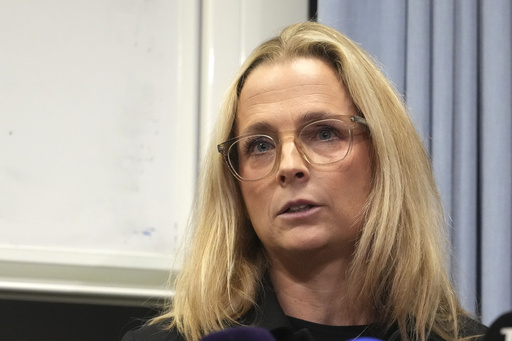
OREBRO, Sweden — The perpetrator responsible for the tragic shooting that claimed ten lives earlier this week in Sweden’s deadliest mass shooting is reported to have links to the adult education center where the attack occurred. Authorities revealed on Thursday that the shooter was armed with at least one rifle-like weapon. Although the gunman has not yet been publicly named, investigations suggest he may have been a student at Campus Risbergska prior to the horrifying events that unfolded on Tuesday.
After the shooting, the gunman was discovered deceased, surrounded by three firearms, ten empty magazines, and a significant quantity of unused ammunition. Officials have not disclosed the exact cause of his death, indicating only that law enforcement did not return fire.
Campus Risbergska, situated on the outskirts of Orebro, around 200 kilometers (125 miles) from Stockholm, offers a range of educational programs for adults aged 20 and above, including vocational training, Swedish language classes for immigrants, and courses for individuals with intellectual disabilities.
A large contingent of law enforcement, numbering approximately 130 officers, responded to the scene promptly after receiving an emergency alert. Witnesses described the atmosphere as chaotic and chaotic, likening it to an “inferno.” Upon their entry into the building, they believed the shooter aimed his weapon at them, contributing to the terrifying environment within the campus.
Local police chief Lars Wirén detailed the horrifying scene to the press, noting the presence of “dead people, injured people, screams and smoke” as civilians fled the premises. Officers discovered at least five victims over the age of 18 suffering from severe gunshot wounds—two remain in intensive care in serious but stable condition, while the others have stabilized post-surgery, with one additional individual treated for minor injuries.
The extensive nature of the school, covering 17,000 square meters (182,986 square feet), required thorough searches to ensure that there were no additional casualties. As of Thursday, investigators had not established a clear motive behind the shooting, stressing that no warnings preceded the attack and suggesting that the shooter acted independently. At this time, law enforcement has ruled out any connection to terrorism.
The aftermath has left the city of Orebro, home to roughly 160,000 people and recognized as Sweden’s seventh-largest municipality, in mourning. “We have gone through two days of profound shock and grief,” articulated John Johansson, chairman of the municipal board. “We continue to seek answers to the multitude of ‘whys,’ experiencing an immense wave of collective sorrow.”
In response to the tragic event, Sweden’s King Carl XVI Gustaf, Queen Silvia, and Prime Minister Ulf Kristersson gathered in Orebro for a memorial service. Additionally, the Swedish Football Association announced its plans to observe a moment of silence at future international matches in remembrance of the victims.
As the nation grapples with the implications of such unprecedented violence, individuals are struggling to process these events. “This is not just a problem for Sweden; it resonates globally,” Johansson commented, highlighting a broader perspective on gun violence.
The distressing news of the shooting has resonated among friends and family, prompting them to reach out to nearby residents, such as Petter Jorman, whose son was once a student at the school.
The reports indicate the attack initiated on Tuesday afternoon, following the departure of many students after a national exam. Individuals fleeing the gunfire sought refuge, hiding behind whatever objects they could find to shield themselves from the threat. Hellen Werme, a survivor, recounted the harrowing experience, describing it as “the worst hours of my life,” as the uncertainty of survival weighed upon her.
School-related gun violence remains rare in Sweden, although incidents involving knives and other weapons have occurred in recent years. The shooter reportedly held licenses for four firearms, three of which were found with him; authorities have since recovered the fourth weapon.
In Sweden, obtaining a firearm legally necessitates a weapon license, requiring applicants to demonstrate intent for acceptable uses, such as hunting or target shooting. Members must present previously acquired hunting or shooting certifications, which involve passing respective training courses. As of early 2024, there were approximately 660,000 registered gun owners in Sweden, collectively possessing around two million firearms.
The authorities mandate that all firearms be securely stored in police-approved cabinets. Permits for fully automatic firearms or handguns are rarely granted and typically time-limited. If a weapon is modified significantly, permits may be revoked.

